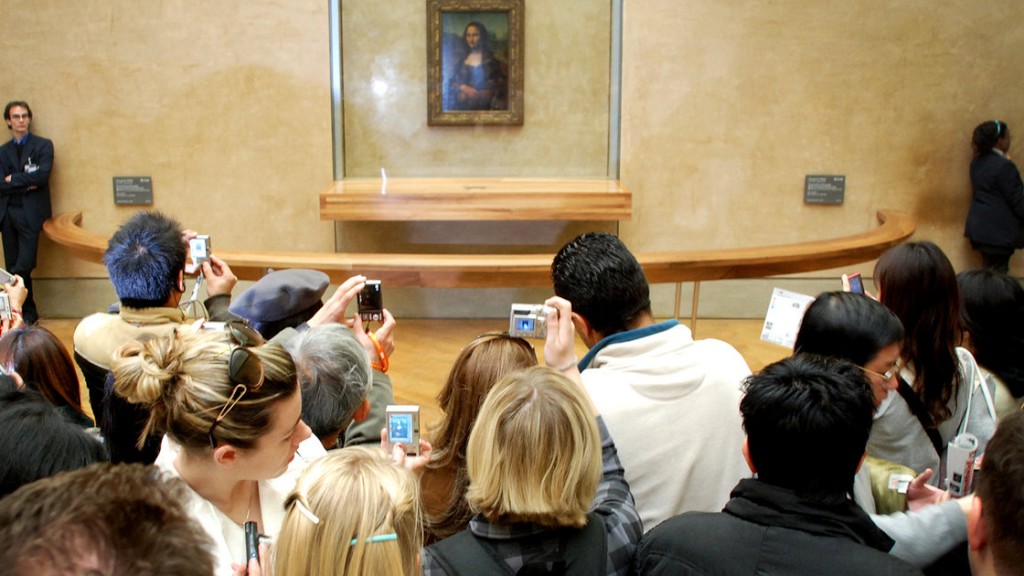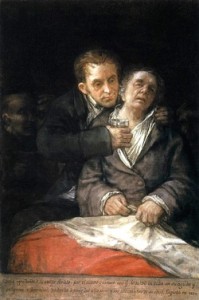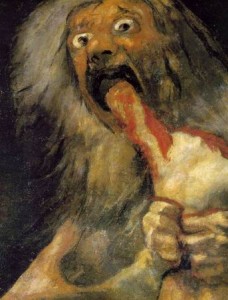I recently became upset (or cranky as my family would say) while reading about a broadcast last week on NPR’s Morning Edition. It featured a Princeton Sociology professor who tried to determine whether it was quality or chance that made an artwork successful. [After analyzing the data he collected, he concluded that as long as the work met “a basic standard of quality” it was chance that made art famous.] But another pointless attempt to quantify art wasn’t what disturbed me, it was the photograph of the crowd around the Mona Lisa accompanying the article.
A scene like this can be seen just about any day at the Louvre, with visitors of different ages and races pushing to get a better view of da Vinci’s most famous work. Yet, if you examine the photograph closely, can you find anyone actually looking directly at the painting? One can excuse the guards, whose job is to look the other way (though their poses appear sadly indifferent to the masterpiece in their midst). But even though some of these tourists have traveled thousands of miles at great expense to reach this room, most are looking at the Mona Lisa through the low-resolution screen of their phones or cameras. [Through a glass darkly, indeed!] Others are looking intensely at the results of a snapshot or showing it to a friend. Some are leaving the scene, satisfied that they have captured their prey and moving on to collect others. I was excited when I noticed the young man on the right actually looking directly at the Mona Lisa, until I realized he was also listening to music with his headphones.
Of course, the large number of people, a layer of thick bullet-proof glass and two rows of barriers do not encourage quiet contemplation of a great work of art. But the more I look at the photograph, the more I think that it is our celebrated technology enabled global culture that is the most significant barrier these visitors are facing. Maybe what I read as the guard on the left’s indifference is actually justifiable disdain.




